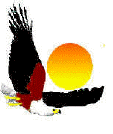
 Reg.
No. 98/18384/08 (a Section 21 Co. not for gain)
Reg.
No. 98/18384/08 (a Section 21 Co. not for gain)
"In
Custody of Our Natural Heritage" 
![]()
"Subject" links at bottom of page
"In
Custody of Our Natural Heritage" "Subject" links at bottom of page |
INSECTS
It is difficult to appreciate fully the significance of the insect species and it's role in the biological pattern of animal life in Marloth Park. There are more species of insects than species of all other classes of animals combined. Scientists estimate that there are 200 million insects for every human! This being one of the reasons insectivores, including insect eating bats, are extremely beneficial to man. Insects have extraordinary abilities to survive adverse environmental conditions.
Metallic "BLUES" BUTTERFLY : (Bloutjies) : On the underside of the wing are "eye marks" with tails (as can be seen from photo on the right), these tails look like feelers and when the wings are closed it gives the illusion of a head with feelers. Predators trying to grab the butterfly by the "head" only breaks of pieces of the wings/tails. Butterflies secrete a substance relished by ants. Tails looking like feelers with "eye marks" on the underside of the wing. When wings are folded and touching the back area
PAPER WASPS (PERDEBY) These (social), reddish wasps, build "paper" nests (during summer), often found under roof trusses. (Nests are whitish having many different holes/entrances, looking and feeling like paper). Nests are constructed by finely chewed tree bark. The highest in the hierarchy produces the majority of eggs with the lowest ranking female very few or none. Most of the work is the responsibility of the lowest ranking female. Larvae is fed with finely chewed insects and/or worms, as well as pollen and nectar. Pregnant / mated females hibernate in winter. Should you have accessible trusses / wooden areas, at your home, take some time to find and investigate these little creatures, you might be pleasantly surprised!! Should insects be your field of interest please supply us your interesting stories, facts and photo's for publication on this page. This page will be updated on a weekly basis. Send information and photo's to: INSECTS Photo received from "The Hanson's"
THE DUNG BEETLE Photo : The Hansons
Elegant Grasshopper Zonocerus elegans,
found throughout most of sub-saharan Africa, which exudes a foul-smelling fluid as a defence mechanism. Contribution and photo: The "Hansons"
Contribution and photo: The "Hansons"
Processionary Caterpillars
Contribution and photo: The "Hansons"
|
|
Wildlife 1 Wildlife 2 Wildlife 3 Predators Lion Photos Lion Ladies Birds Insects Snakes Images Riverview Lost? click here to go back to the NEF CONTENTS page Copyright © 2000 Ngwenya Eco FoundationWebmaster: e-mail: Charmane
Baleiza
Please
do not
copy any
photographs without permission! |